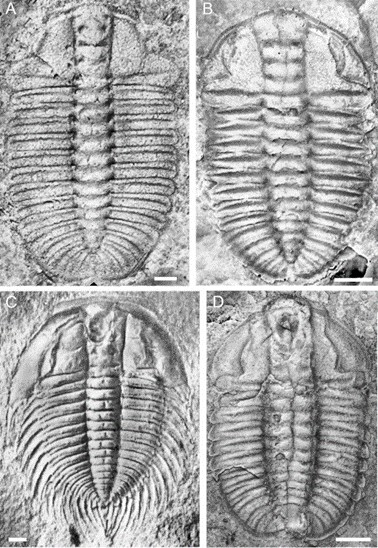Balang Fm
Type Locality and Naming
The type section of the Balang Formation is Palang-Niuchang section, located between Palang and Niuchang villages, about 15 km northwest of Duyun County. Because the base of the Balang Formation is not exposed in the type section and the description of the section by Qian (1961) was very briefly, an auxiliary section, the Zhangjiapo section was proposed by Yin in Dong (1997) as representative section of the formation. The Zhangjiapo section lies 20 km north of the seat of Jiangkou County in Tongren City (108°51’E, 27°53’N), and was remeasured by No.2 Brigade of Guizhou Regional Geological Survey Team in 1965. In this section, the Balang Formation is 366.6 m thick.
Synonym: (杷榔组)
Lithology and Thickness
The Balang Formation is a fine-grained clastic sequence. It is dominated by grayish green, yellowish green and dark gray calcareous clay shale, clay shale and calcareous shale, intercalated with siltstone, carbonaceous slaty shale and marlstone. The formation commonly bears horizontal laminae and disseminated pyrite, representing rather deep-water and stable sedimentation environment in transitional zone between platform and basin.
Relationships and Distribution
Lower contact
The Balang Fm is in conformable contact with either the underlying Bianmachong Fm or Niutitang Fm. Its lower boundary is defined by the lithologic change from the black carbonaceous shale of underlying Bianmachong Fm or black shale of Niutitang Fm
Upper contact
It is overlain conformably by Chinghsutung Fm. The upper boundary is defined by the appearance of oolitic limestone at the base of the overlying Chinghsutung Fm
Regional extent
The Balang Formation is exposed in the southern part of the Jiangnan Slope Area of South China Region, distributed in eastern and southeastern Guizhou and western and northwestern Hunan. The Balang Formation is gradually getting darker in color from west to east. The thickness of the formation varied greatly. In the area of Cengong and Majiang counties of eastern Guizhou, it is about 500‒700 m thick, whereas in other areas in eastern Guizhou, it is 200−500 m thick. In western and northwestern Hunan, the formation is usually about 200 m thick.
GeoJSON
Fossils
The Balang Formation is characterized by yielding rich oryctocephalid trilobites with A, B, C, D, O forms, i.e. Arthricocephalus, Blangia, Changgaspis, Duyunaspis and Oryctocarella. In the type section, Qian (1961) described following trilobite taxa from the formation, Balangia balangensis, Changaspis micropyge, C. elongata, Oryctocarella duyunensis, Redlichia chinensis. In other localities the formation yields additional trilobites Arthricocephalus chauveaui, A. xinzhaiheensis, Duyunaspis duyunensis, D. paiwunensis, Dinesus bura, and Eosoptychoparia guizhouensis.
[Figure: Figure 1.21 Index fossils and key forms of the Balang Fm. A, Orectocarella duyunensus (Qian, 1961) from the Orectocarella duyunensus Zone, Duyun, southeastern Guizhou Province; B, Arthricocephalus chauveaui (Bergeron, 1899) from the Arthricocephalus chauveaui Zone, Huayuan, northwestern Hunan Province; C, Balngia balangensis Qian, 1961 from the Arthricocephalus chauveaui Zone, Duyun, southeastern Guizhou Province; D, Changaspis elongata (Li in Qian, 1961) from Orectocarella duyunensus Zone, Duyun, southeastern Guizhou Province; E, Duyunaspis duyunensis Zhang and Qian in Zhou et al., 1977, from Oryctocarella duyunensis and Arthricocephalus chauveaui zones, Huayuan, northwestern Hunan. All scale bar = 1 mm.]
Age
Depositional setting
The formation represents rather deep-water and stable sedimentation environment in transitional zone between platform and basin.
Additional Information
